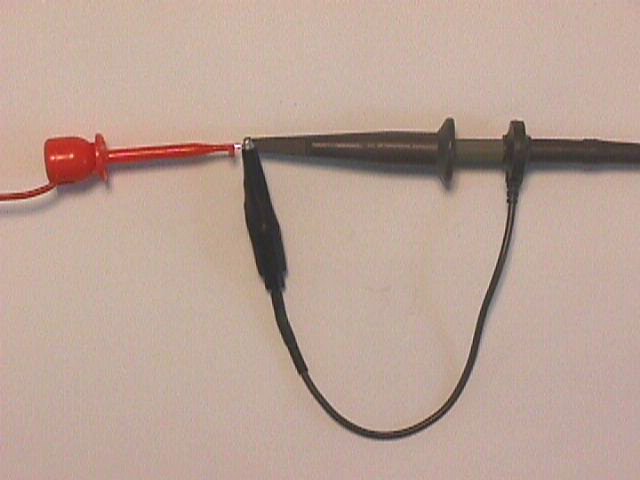

Address: P. O. Box 1457, Los Gatos,
CA 95031
TEL:
800-323-3956/408-356-4186
FAX:
408-358-3799
Mobile: 408-858-4528
URL:
www.dsmith.org
Email: doug@dsmith.org

In the picture above, the probe is shorted by its own ground lead. If we make the assumption that the probe accurately delivers the voltage between its tip and ground lead attachment point to the scope modified by a factor (not necessarily a good assumption), then the probe above is measuring the voltage drop across its ground lead. The ground lead and probe body also form a loop which can pick up magnetic fields. In most instances, the pickup by this loop is much smaller than the drop across the ground lead caused by currents flowing from the chassis or ground of the circuit being measured to the scope chassis along the ground lead and probe cable shield.
The logic signal from a lowly HC240 buffer, 2ns risetime with 40 mA short circuit current, can cause a few volts of inductive (Ldi/dt) drop across the 10 to 15 cm ground lead above. But the real problem is that currents induced in the ground connection by ESD events within several feet can result in 5 to 10 or more volts of drop across the ground lead. The configuration of a shorted probe connected to a few feet of wire, as above, makes a very sensitive ESD event detector. Unfortunately, if you are looking for a glitch in your circuit, you will see one that is not really there, caused by the unavoidable ESD events people generate while moving about the room.
The configuration in the picture is one example of what I call a "null experiment." A null experiment is one that should result in a zero output if all is well. To the extent the result is not zero, the result sets the error level of the experiment due to spurious pickup. If a scope probe null experiment produces 8 volt glitches, it makes no sense to look for logic glitches in 3 volt logic. The spurious pickup in this case is greater than the signals one is looking for.